After more than a decade without a proper city break, I found myself strolling through the cobbled streets of Prague, a city bursting with charm, history, and architectural elegance. The last time I had this kind of experience was all the way back in 2008, when I joined shore excursions across the Mediterranean—through Corsica, Florence, and Pisa—thanks to my former employer, Carnival UK. Life since then had been steady and grounded, until my wife suggested, just a few months ago, that we should try something different. And so, our Prague adventure was born.
One of the standout experiences from our visit was an afternoon at the Mucha Museum. More than just an art gallery, the museum is a lovingly curated tribute to one of the Czech Republic’s most iconic artists: Alphonse Mucha.
Stepping into the Mucha Museum
We visited the museum on a warm Saturday afternoon in mid-to-late May. Entry was 300 CZK per person, which came out to around £10.30, making it a reasonably priced cultural stop in the heart of the city. The museum provides free locker storage, which is genuinely helpful when exploring a compact but immersive gallery space like this one.
Though not large in scale, the museum immediately immerses you in Mucha’s artistic world. The rooms are quiet, never overcrowded, and there was a noticeable sense of reverence from everyone present. It's the kind of museum that respects its subject—and expects visitors to do the same.
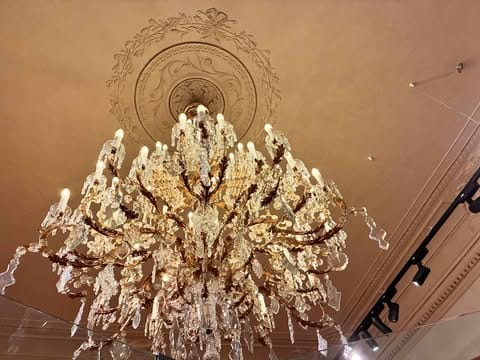
The soft lighting, provided in part by a series of ornate chandeliers, adds a refined touch to the environment. These chandeliers aren’t just decorative; they serve a dual purpose of both ambience and function, designed to highlight the details in Mucha’s works without overpowering the subtlety of his style.
Lithographs That Defined an Era
Mucha’s lithographic posters from the 1890s, particularly 1894–1898, were the highlight for me. These pieces are stunning not just for their beauty, but for how modern they still feel. It's no exaggeration to say that this style—characterized by delicate lines, ornamental motifs, and soft pastels—has rippled through visual storytelling today. You can see its influence especially in indie video game design, where Art Nouveau-inspired aesthetics appear in everything from menus to character art. Titles like “Child of Light” by Ubisoft and “Gris” by Nomada Studio echo Mucha’s style through their flowing lines, stylised female figures, and ornate, almost dreamlike environments. Even games like “Bioshock Infinite”, though more industrial in theme, borrow heavily from Art Nouveau typography and decorative design, proving just how ahead of its time Mucha’s visual language truly was.
Two posters stood out:
- "Gismonda" (1894) – The piece that made Mucha a household name in Paris. Created for the legendary actress Sarah Bernhardt, this tall, narrow lithograph defied the aesthetic norms of the time. The elongated figure, intricate halo-like background, and rich detail were unlike anything Parisians had seen before.
- “Médée” (1898), created for the Théâtre de la Renaissance. In it, Sarah Bernhardt is shown moments after the mythic act of infanticide, embodying the tragic power of the role. Mucha surrounds her with rich, ornamental detail and dark, dramatic tones, amplifying the emotional intensity of the scene. It’s a haunting image—gripping and unflinching—that demonstrates Mucha’s ability to balance theatrical storytelling with fine artistic composition.
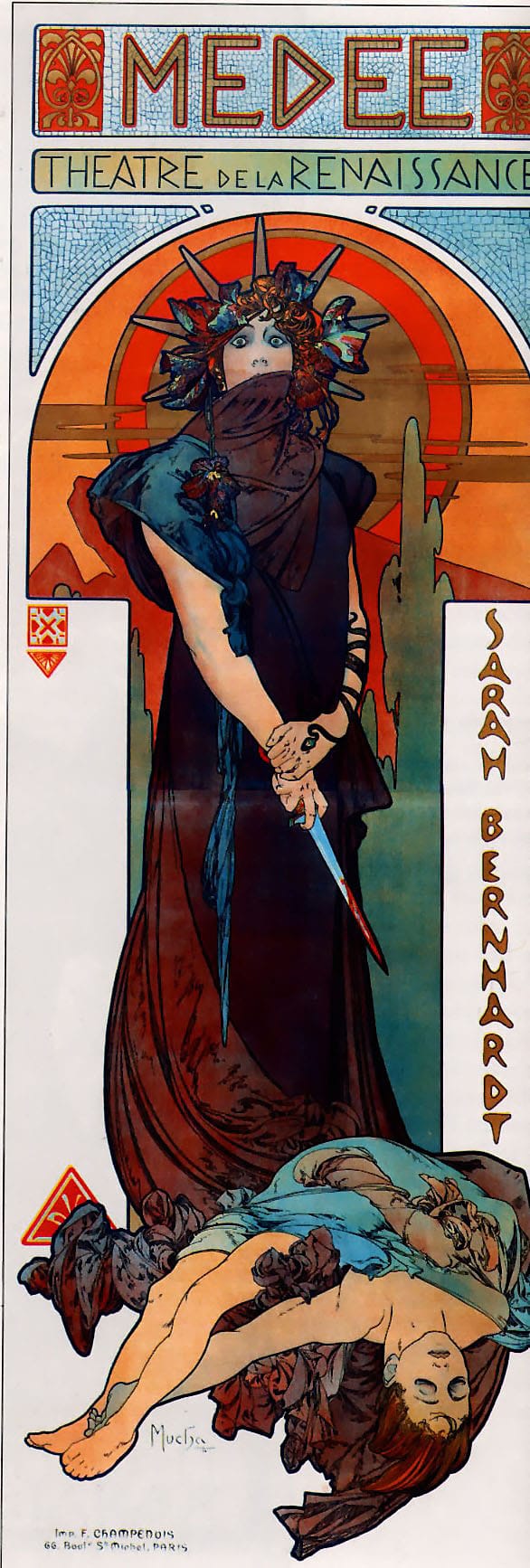
Seeing these pieces online or reproduced on souvenirs doesn’t do them justice. Their texture, scale, and the fine detail of Mucha’s line work are best experienced in person. It’s a reminder that art—even commercial art—can transcend its purpose and become something timeless.
The Slav Epic: A Monumental Vision
Perhaps the most awe-inspiring part of the museum was its presentation of The Slav Epic I–V. Though the originals are currently housed at Moravský Krumlov Castle, the Mucha Museum offers beautifully scaled-down versions that still manage to evoke the enormous scale and emotional gravity of the original series.
Each painting from the Slav Epic explores themes from Slavic mythology, history, and identity. The original works are colossal—up to 8 meters wide and 6 meters tall—and took Mucha nearly two decades to complete. Standing before even a reduced version of them, I felt dwarfed in the best way. They’re cinematic in scope but deeply personal in tone, a reflection of Mucha’s deep connection to his homeland.
It was sobering to realize that these immense canvases were once controversial for their political and nationalistic overtones. Yet, viewed today, they stand as testaments to cultural storytelling on an epic scale.
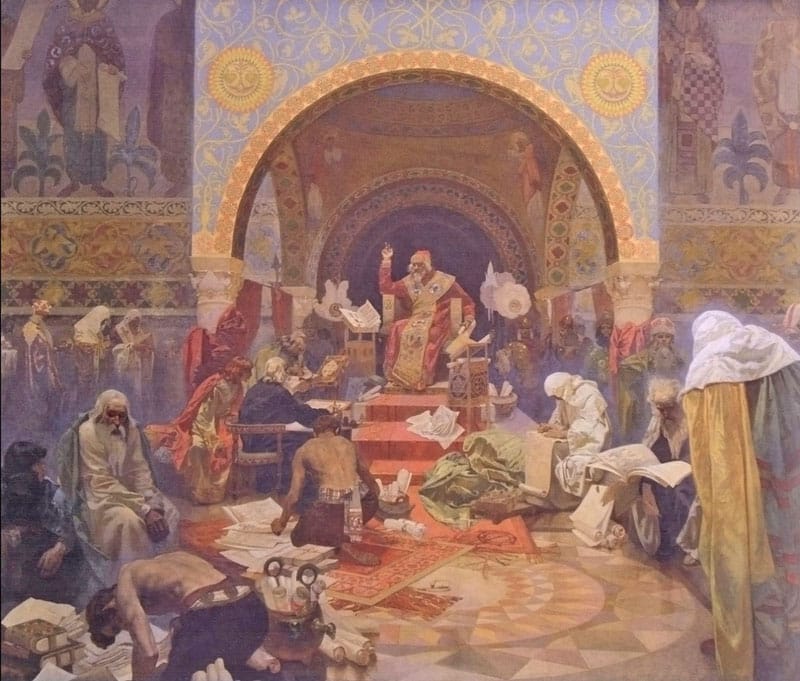
A Life Less Ordinary
Alphonse Mucha lived a life many artists could only dream of. Born in 1860 in Moravia, he began as a theatre set painter and made his way to Paris, where his life changed forever thanks to a last-minute poster commission—Gismonda—that caught the city's attention.
Unlike many of his contemporaries, Mucha was both critically acclaimed and commercially successful. He:
- Designed jewelry, interiors, and decorative panels
- Worked with famous names like Sarah Bernhardt
- Created national stamps and currency
- Spent time in the United States seeking funding for his Slav Epic project
- Returned to Czechoslovakia to complete his vision, which became his legacy
His ability to span fine art, commercial work, and patriotic projects was rare, even in his time. The museum showcases this versatility beautifully, giving a clear timeline of his progression and influence.
A Ride Through History: The No. 42 Tram
Part of what made the day so enjoyable was the journey there. We reached the museum via the historic No. 42 tram, a lovingly restored tram route that winds its way through some of Prague’s most scenic quarters. It’s a visual treat in itself, combining charm with utility.
The nearest stop to the museum is Václavské náměstí (Wenceslas Square), from which it's just a few minutes’ walk. If you're already planning on visiting the main landmarks in the city, this museum is conveniently located and easy to include in your itinerary.
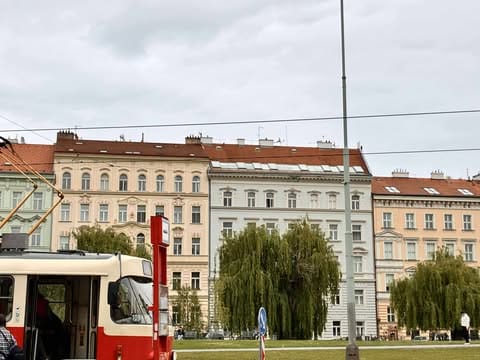
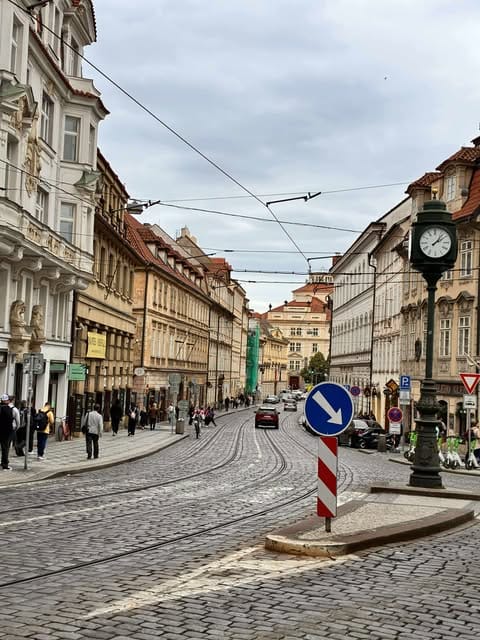
The historic No. 42 tram: a scenic and nostalgic ride through the heart of Prague.
Beyond the Museum: A Lasting Impression
While the gift shop has an impressive selection of Mucha-inspired prints, books, and souvenirs—and you can find high-res versions of his work online—nothing compares to seeing his originals in person. The scale, subtlety, and sheer presence of his work is something that digital media simply can’t capture.
The Mucha Museum may be modest in size, but it offers a focused, enriching experience that lingers long after you leave. If you’re visiting Prague and want to absorb a unique blend of history, artistry, and national pride, this place is more than worth your time.
Further Reading & Resources
For more detailed information on the Mucha Museum, Prague's public transport, and local insights, consider the following resources:
- Official Mucha Museum Website
Explore the museum's collections, opening hours, and ticket information.
👉 https://www.mucha.eu/en - Historic Tram Line No. 42
Learn about the vintage tram line that offers a scenic route through Prague's historic center.
👉 https://www.dpp.cz/en/entertainment-and-experience/dpp-history/historic-tram-lines-nos-42-and-43Pražská integrovaná doprava - Living Prague
Discover local tips on food, drink, and guided tours in Prague.
👉 https://livingprague.com/
